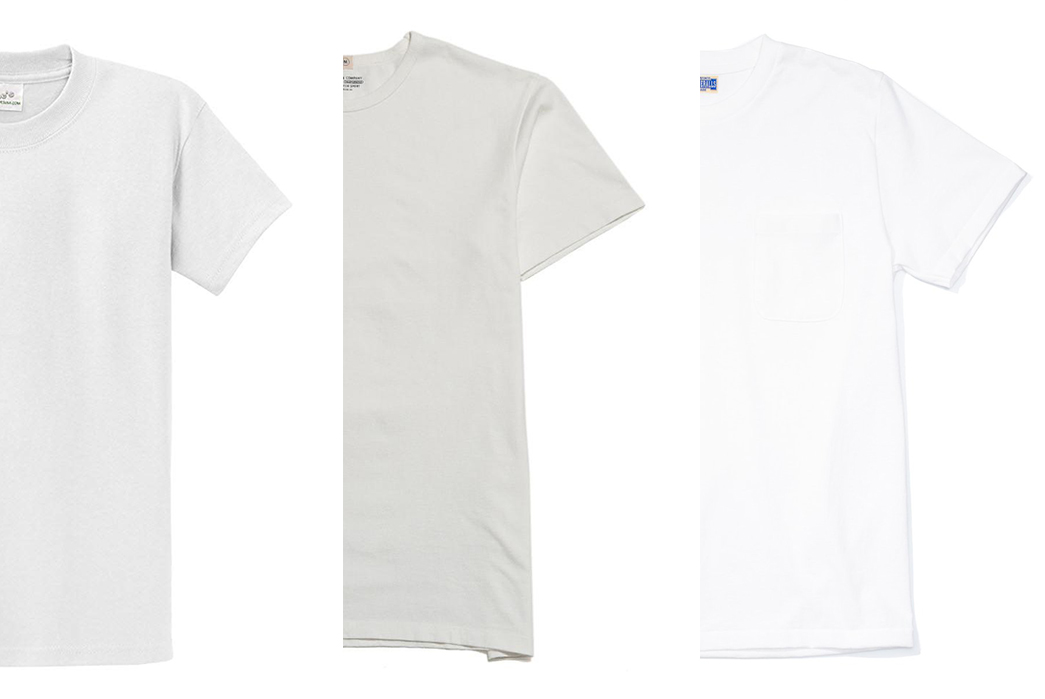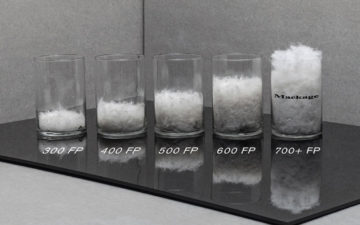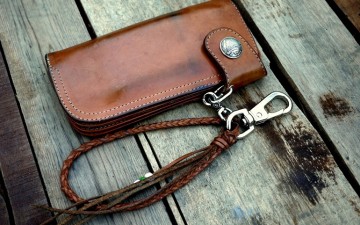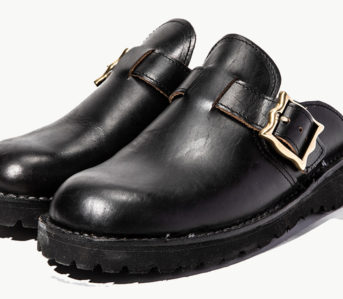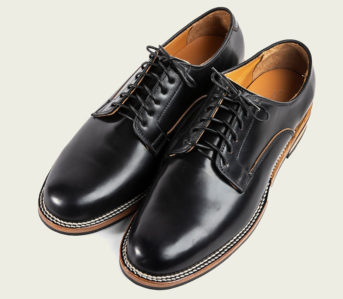The t-shirt was once a garment rarely seen. Tucked away beneath one’s outer layers, the t-shirt was designated as an undergarment; to be worn as a layer between the body and one’s outward-facing garment, much like a pair of briefs. Today, we’ve largely shed the dressy layers all the way down to the t-shirt, and it’s more visible than ever. It’s become the centerpiece of an outfit, replacing button-ups entirely. Though briefs haven’t enjoyed the same ascent to the outer layers of daily garb (maybe a few more years?), t-shirts are a commodity and can range from basic, penny-pinching multi-packs to the rarified and esoteric.
This article isn’t going to tell you which t-shirt you should buy (this one will). But what it will cover is the wide variety of t-shirts on the market. While most view the t-shirt for its basic utility, there are others who are looking for a little bit more. We’ll outline the details you can expect from each tier and what separates one from the next. Many will sit firmly within their tier while a handful of others straddle between mid and end-level (depending on the product). As a side note, most of the t-shirts in the photos tend to be grey, and that’s simply to showcase their finer details with more clarity than a white t-shirt would.
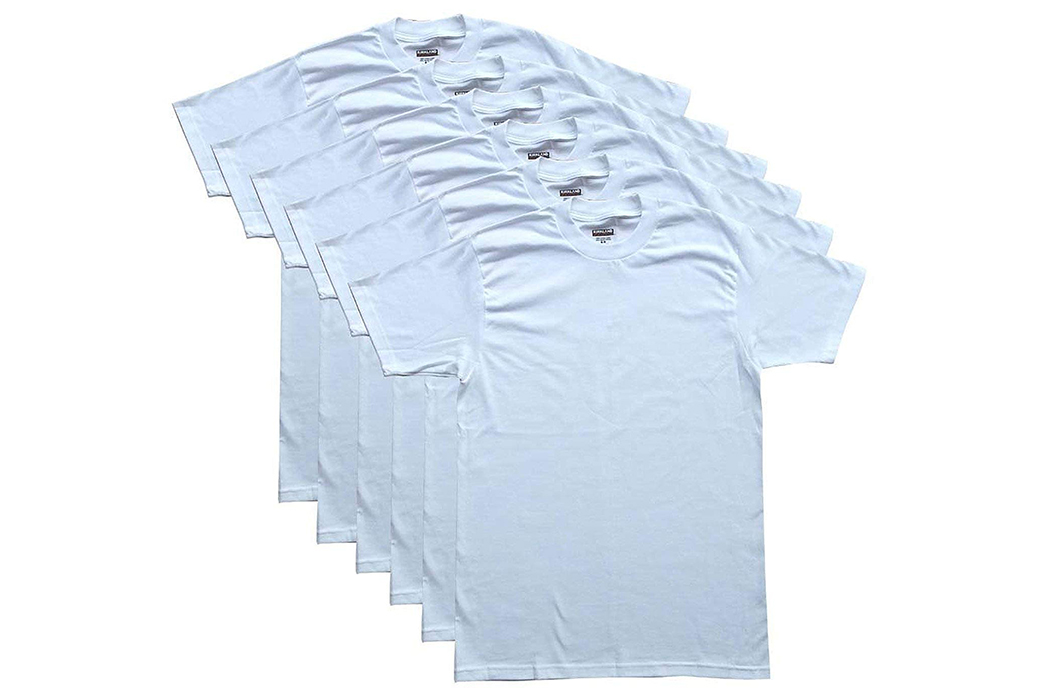
Kirkland’s 6-pack of Crew Neck T-shirts comes out to about $5 per shirt. (Image via Amazon)
Entry Level (Sub $20 per t-shirt)
This is where you’ll find the majority of t-shirts. Entry level t-shirts are most often found at budget-friendly big box stores like Walmart, Costco, and Amazon. Because of their mass appeal and low price point, these t-shirts will likely come in bundles. Multi-packs of four or more are common as are fabrics with synthetic blends.
Additionally, entry-level t-shirts are more likely made in countries known for mass production and cheap labor such as Haiti, Vietnam, and China. Though the country of origin doesn’t cause a lower-grade product, most companies producing t-shirts at a large scale and fast turnaround often turn to these countries for a better bottom line.
Regarding materials, entry-level t-shirts also will obscure (i.e. hide) what kind of cotton they use. As is mostly the case, they’re using what’s known as Upland cotton, the lowest grade of cotton. And, if a t-shirt isn’t all-cotton, they’re also cutting costs by using synthetic blends.
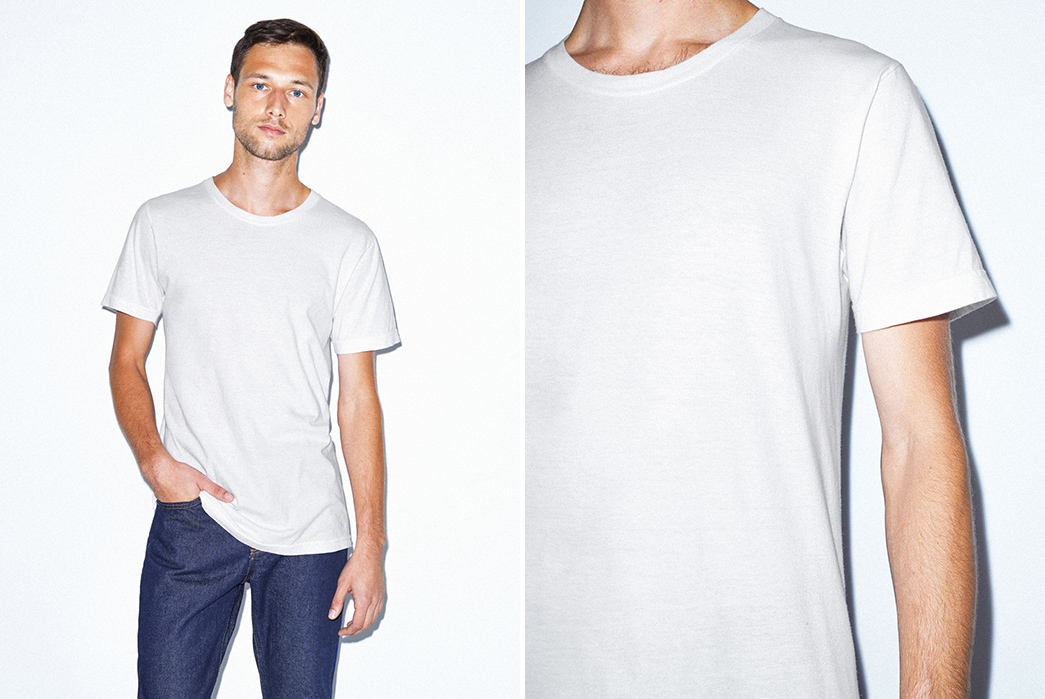
American Apparel Fine Jersey Crewneck T-Shirt (Image via American Apparel)
Notable brands of this tier:
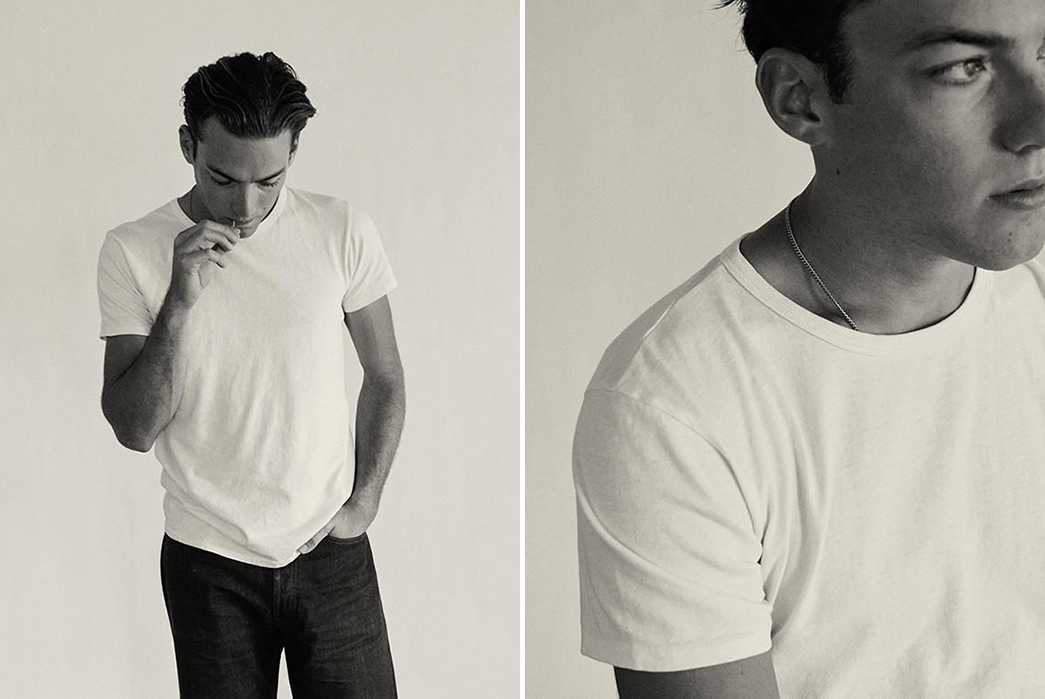
Knickerbocker Tube Tee (Image via Knickerbocker)
Mid Level ($35-60 per t-shirt)
Move beyond the big box stores and into smaller, specialty boutiques, you’ll start to see single t-shirts that cost as much or more than a 6 pack of the cheap stuff. Companies in this range are often smaller and keep production stateside or in countries with a reputation for quality knitwear and better labor conditions like the United States (often in Los Angeles), Canada, Portugal, and Germany.
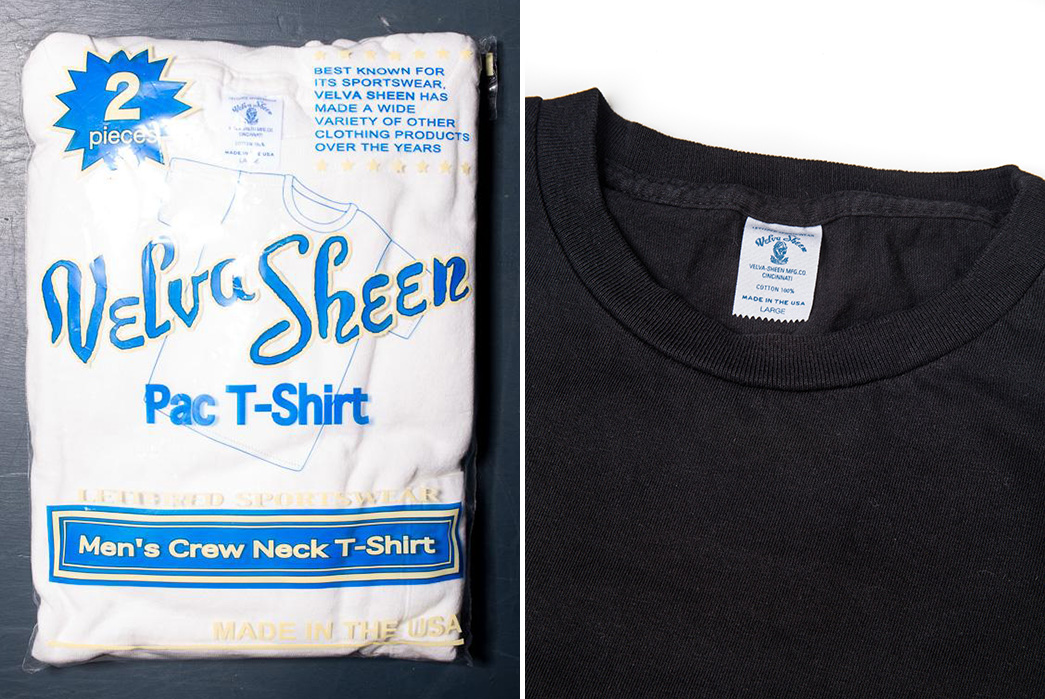
Materials known for their longer staple fibers, strength, and softer hand like Supima cotton and Egyptian cotton are often used as well. Fabrics in this range might also be milled in Japan and cut elsewhere. You’ll also find better construction details like tube-knitting which results in no side seams, flatlock seams for a smoother feel, blind hems, and bound collars.
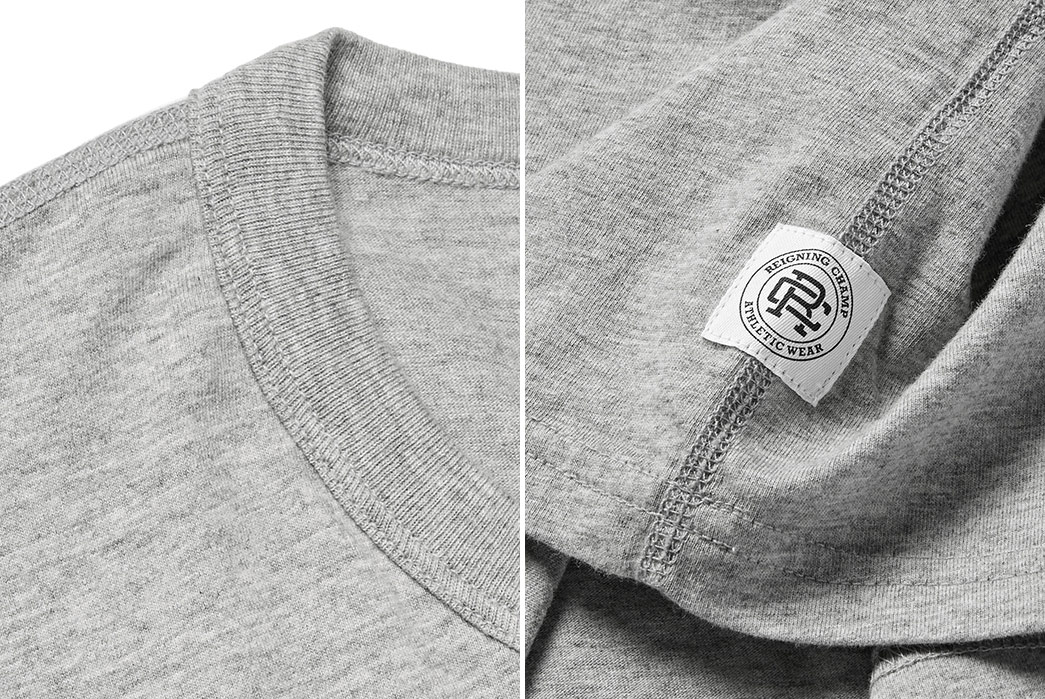
Reigning Champ details include flatlock stitching and bound collars. (Images via Mr. Porter)
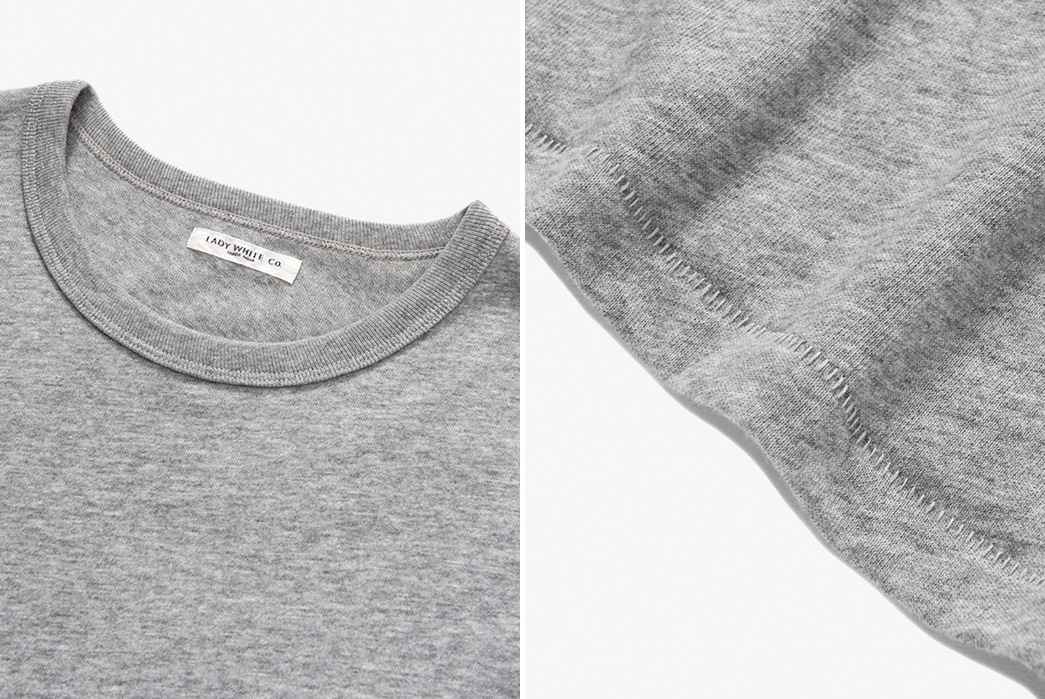
Lady White details include bound collar (left) and blind hem stitching (right). (Images via Lady White Co.)
Notable brands of this tier:
- Lady White
- Velva Sheen
- Jungmaven
- National Athletic Goods
- Reigning Champ
- Knickerbocker
- Homespun Knitwear
- 3sixteen
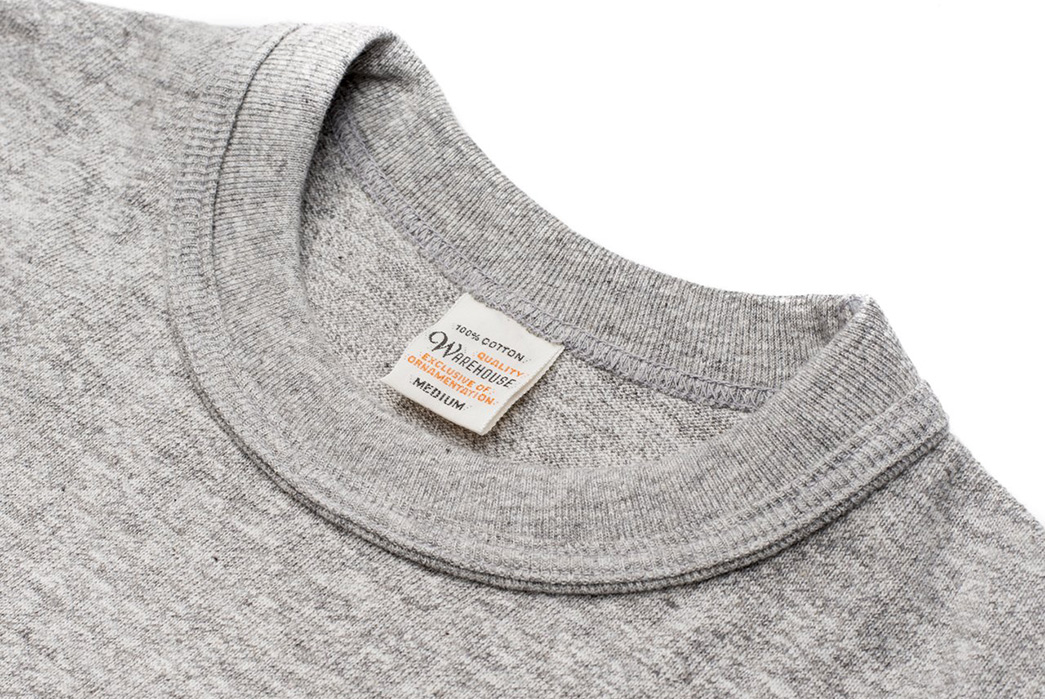
Warehouse’s reinforced bound collar (Image via Clutch Cafe)
End-Level (+$60 per t-shirt)
Some might call it frivolous, others will decry it as downright ridiculous. T-shirts in the end-level category are sure to march straight past diminishing returns and send your total Cost Per Wear climbing. But, they’re arguably more fun to wear.
End-level t-shirts span a wider variety of fabrics, often playing with textures, dyeing methods, construction techniques, and, in some cases, even growing their own special strain of cotton. Often, if they’re not using all-cotton jersey, they’re upgrading fabric with a blend of materials like rayon, silk, linen, and wool. Many manufacturers will tip the scales of their t-shirts to compete alongside sweatshirts, jumping into fabric weights of 10oz. or more.
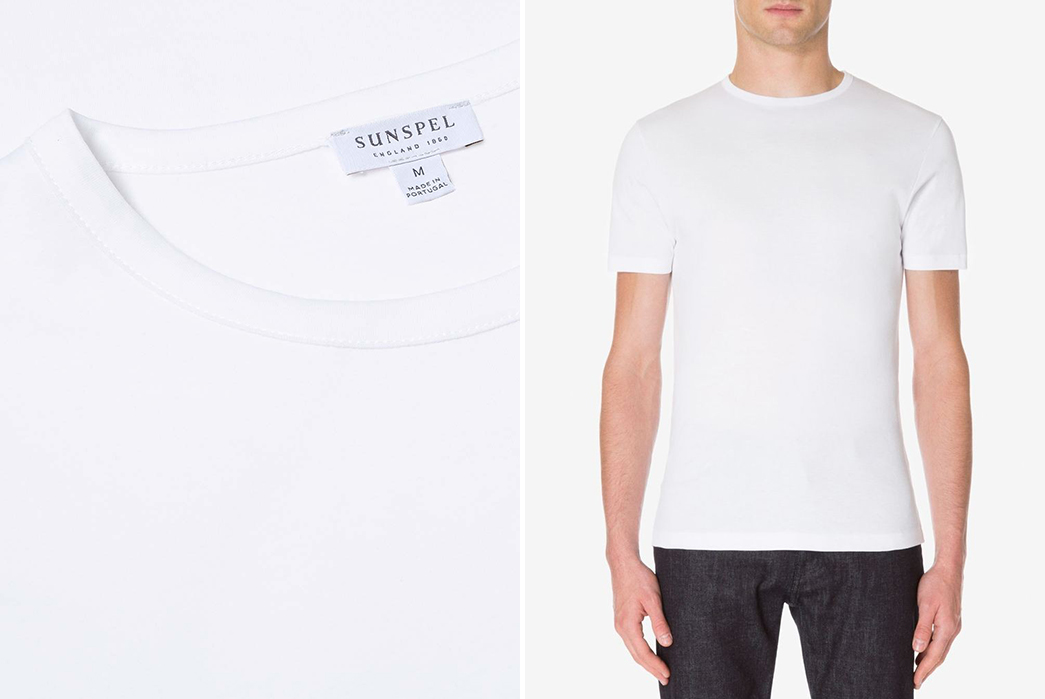
Sunspel’s Sea Island Cotton T-shirt retails for $195.
You’ll also see a prevalence of loopwheel fabrics in this category. Like tube-knit garments, loopwheeled garments also have no side seams. The key difference is in the process. While you can certainly find tube-knit t-shirts in the mid-tier categories and even in the entry-level categories, loopwheeled fabrics are notoriously tedious to make.
Loopwheel machines only use the tension of gravity to knit the fabric, resulting in a dense and extremely soft knit. But the catch here is that its only able to produce a single meter of fabric per hour. Add to that the rarity of these machines and you’ve got yourself a luxury t-shirt (and a price tag stamped ‘$85’ at minimum).
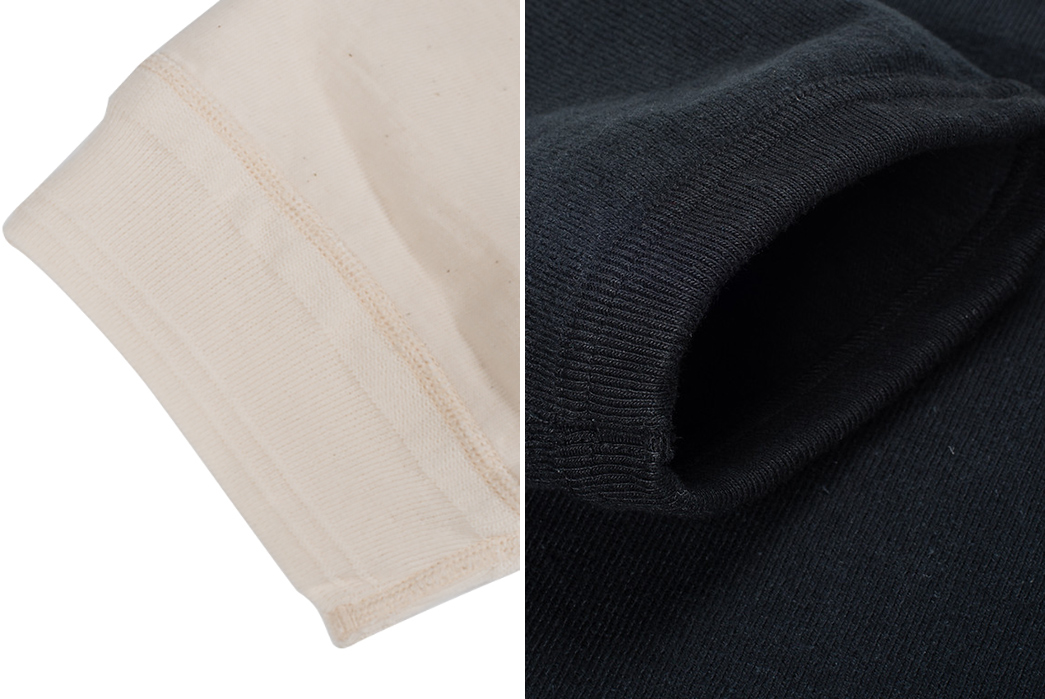
Sleeve details on the Stevenson Overall Loopwheel T-shirt (left) and the Iron Heart 11oz. Cotton Knit Crew Neck Short Sleeved T-Shirt (right)
Notable brands of this tier:
